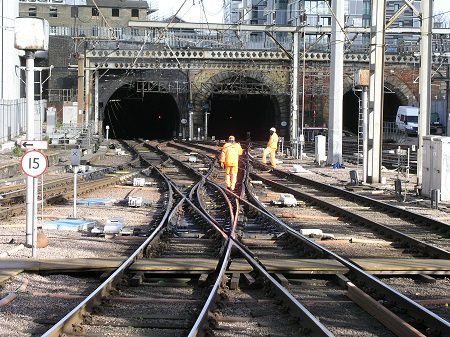Posted 29th June 2022 | 2 Comments
Digital East Coast to go ahead with £1bn budget

THE government has confirmed that the upgrade to ETCS on the East Coast Main Line is to go ahead, with a budget of more than £1 billion. The digital system has been under test for some time on part of the Hertford Loop, controlled from laboratories at Hitchin. ETCS will cover the main line from London King’s Cross to Stoke Tunnel, which is just south of Grantham and where the four track line becomes double.
Transport secretary Grant Shapps is still embroiled in railway industrial disputes. He said: ‘While union bosses waste time touring television studios and standing on picket lines, I am busy getting on with the job at hand and modernising our railway. The world is changing and, despite the best efforts of unions, I am determined to help our railway change with it.’
Toufic Machnouk, the director of industry partnership for digital railway at Network Rail, said: ‘We are delighted to have been given the go ahead for this ground-breaking programme that will transform the capability and resilience of the East Coast Main Line and be a key enabler for the wider network.’ He continued that the East Coast Digital Programme is ‘uniquely bringing together all elements of track and train through a pioneering industry partnership that is working beyond boundaries in a deep collaboration. We will upskill our people and use new technology to improve the way we work for the benefit of passengers and freight customers.’
The ECDP will provide a much-needed financial boost to the industry and over its lifetime will be 42 per cent cheaper than the current system, according to the Department for Transport. It will also help the government towards its Net Zero goal by decreasing carbon emissions by 55,000 tonnes – the equivalent of more than 65,000 flights from London to New York.
LNER managing director David Horne said: ‘Digital signalling will allow the full potential of our Azuma fleet technology to be realised, and means our customers will benefit from even more reliable and sustainable journeys in the future.’ Thameslink and Great Northern’s managing director Tom Moran added: ‘We're delighted with this announcement, which will mean better services in the future for our passengers on the East Coast Main Line. This massive investment builds on our work to implement digital signalling on the Northern City Line into Moorgate in the City of London, and it means we can continue to roll out the technology on some of our key routes.’
Reader Comments:
Views expressed in submitted comments are that of the author, and not necessarily shared by Railnews.

david c smith, Bletchley
The main inter- conurbational services on HS2 are under 200 miles. on routes where rail already has the lion's share of the maket. If the extra capacity is needed, would an East Coast alignment for HS2 have made more sense ? the main targets ( Scottish Central Belt , Tyne-Wear-Tees, West and East Yorkshire) are on average further from London , with more potential for inreased traffic share.A retired BR civil engineer did point out to me the high costs of HS through the Carnforth - Glasgow / Edinburgh section.
Also, is 360 km/hr actually neccesary ? 320 km / hr ( 200 mph) ought to be sufficient for a relatively small country.
The resignalling only option could still be relevant for particular stretches of line. Yes, let's have the investment ; I just wish the details had been thought through to give more benefit for less cost.
david c smith, Bletchley
In general, my understanding is that both class 91's on ECML and Pendolino's on WCML were limited to 125 mph due to the signalling constraint , whilst both had a 140mph max. speed themselves. What is the corresponding max. speed for the "Azuma's" ?
It appears the cost of installation is around £1 billion per 100 miles. ( ie. appx. £10 million per mile ). This seems to compare with a cost of around £100 billion for around 300 miles of HS2 ; does this just point to the poor benefit / cost situation of the latter ?
[Two separate questions. The answer to the first is that the Class 800 and 801 Intercity Expresses have a maximum speed of 140mph, as do the Class 91s and the 390s. Indeed, when BR introduced the 91s they were branded Intercity 225 -- which is 140mph in km/h. There were some trials on the ECML, with a new flashing green aspect on the signals where 140mph was permitted (single green meant max.125mph). However, the Railway Inspectorate would not authorise 140mph without in-cab displays, so ETCS on the ECML could perhaps mean 140mph running will be possible. The answer to the second is that a new high speed line built for a maximum of 360km/h is very different to a conventional railway with a max. of 225km/h and mostly 200km/h. There is also the extra capacity provided by HS2. Yes, I know Covid has introduced some short-term uncertainties, but the reductions in demand seem to be mainly affecting commuter traffic, not intercity services. HS2 will also release valuable paths on the WCML which will be needed for more freight trains in the greener future.--Ed.]